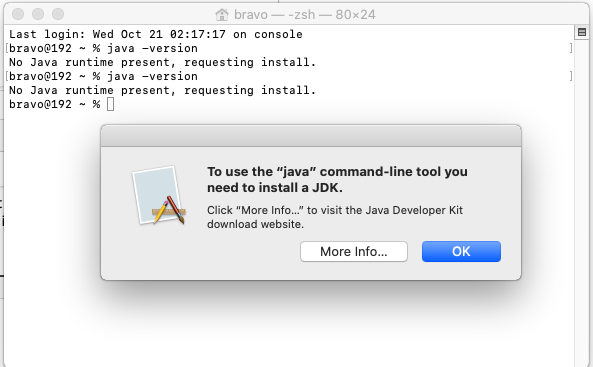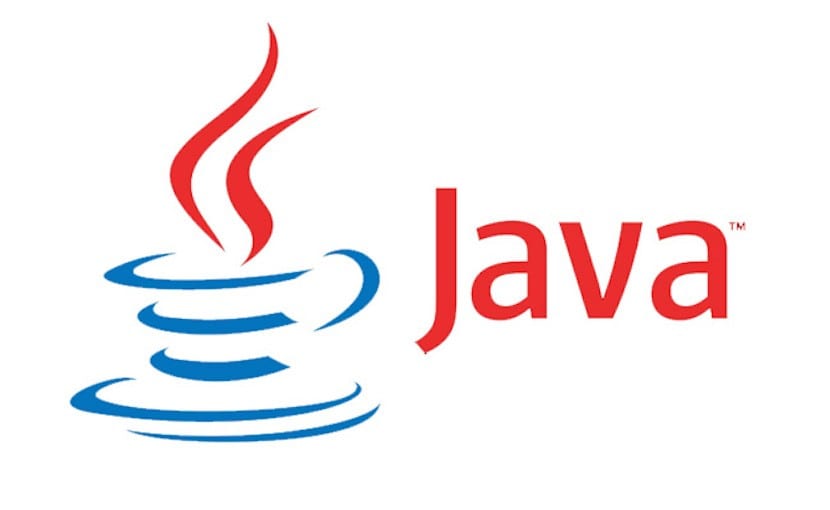

There is nothing inherently insecure or dangerous about having Java installed on your Mac. If you don’t have that pane, you don’t have a proper installation of Java if you do, it will tell you which version is installed, and should also help you bring it up to date as needed.
#JDK JAVA MAC OS HIGH SIERRA INSTALL#
Modern implementations of Java also install their own pane in System Preferences, to control Java’s settings. If you merely get an error, indicating that the command was not found, this implies that you don’t have any version of Java installed. Java HotSpot(TM) 64-Bit Server VM (build 9.0.1+11, mixed mode) Java(TM) SE Runtime Environment (build 9.0.1+11) Currently, this should produce a response such as If you have a modern Oracle version of Java, you can tell from the command line by typing If you want to run any modern Java software, including that provided over the internet, then you should install the current version from Oracle here.Īpple’s Java 6 and Oracle’s Java 9 can peacefully coexist if you use apps requiring both versions, and Apple has now confirmed that its existing Java 6 installer is good for High Sierra too. Apple’s Java 6 runtime is available from here. The only recent apps which require you to install Apple’s old Java support are most of those in Adobe Creative Studio 6 and earlier, which will not run without it. By default, Safari and other browsers will not run Java automatically, but at least ask you if you want to enable it for that site, when it’s installed.Īpple used, a long time ago, to bundle Java with OS X, and still provides a separate installer if you need to support Java 6.

Safari’s controls over Java are quite separate, and part of the Websites section of its Preferences. Java is normally installed as an add-in to macOS, and supports the running of Java apps via web pages and as standalone apps on your Mac. It has also been built into other apps as a scripting language: again, their support is built-in, and there are no separate components to install or keep updated.

Unless you have good reasons to disable it, it is best enabled, as many websites stop working if your browser doesn’t handle its scripts. In Safari, you control JavaScript in the Security section of its Preferences dialog. Think of it as a type of AppleScript which runs in web pages. It’s most unfortunate that these two languages have such similar names, as it makes them so easy to confuse.Īlthough influenced by Java, JavaScript is an event-driven language used extensively on webpages, which is normally built into your browser and other apps which support it. This was the stupidest thing Oracle could do with Java.Java and JavaScript are completely different Oracle specifically BROKE the Java sandbox, allowing Java to interact directly with computer systems. Why is Java over the Internet now so dangerous? Thank Oracle, who obtained Java when they bought Sun Microsystems. Check up on their reputation and verify they are NOT Trojans. So avoid running mysterious Java apps you know nothing about. Trojan horse Java applications are possible. Just be sure you run Java apps, off the Internet, from reliable developers. NOTE: Running Java applications off the Internet is not typically a problem. But for the sake of simplicity and the ability to reinstate the Java Plug-In whenever you may want to actually use it on the Internet, I'd leave everything else in place. There are other Java bits and pieces you could trash. Java now cannot run in them over the Internet, which is where Java is particularly dangerous. I have them in a folder labeled "Internet Plug-ins (disabled)" inside the Library folder.ģ) QUIT and restart all your web browsers. I advise that you store these files somewhere, just in case you want to use them later for some odd purpose. Yes, that includes Apple's own alias file "ugin". A quick and simple way to DISABLE running JAVA over the Internet (if you have Admin privileges):Ģ) Remove from this directory everything listed as 'Java'.


 0 kommentar(er)
0 kommentar(er)
